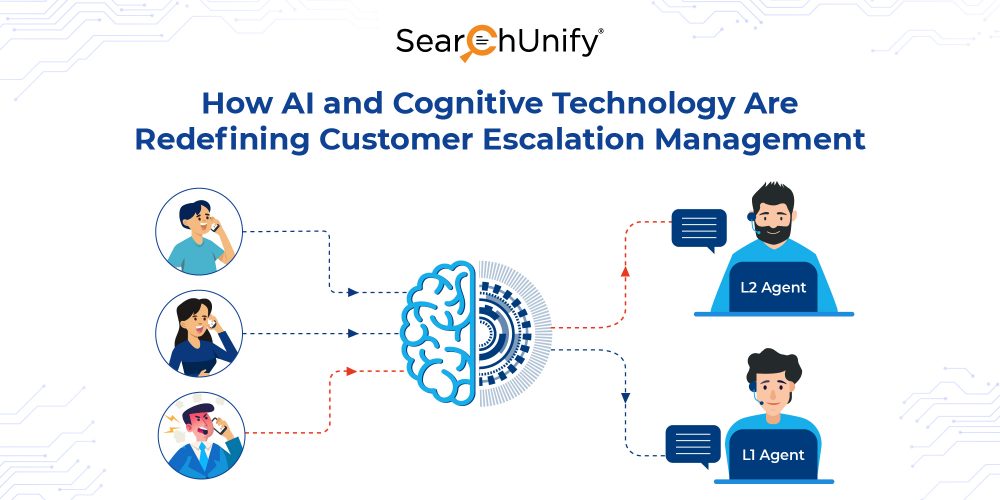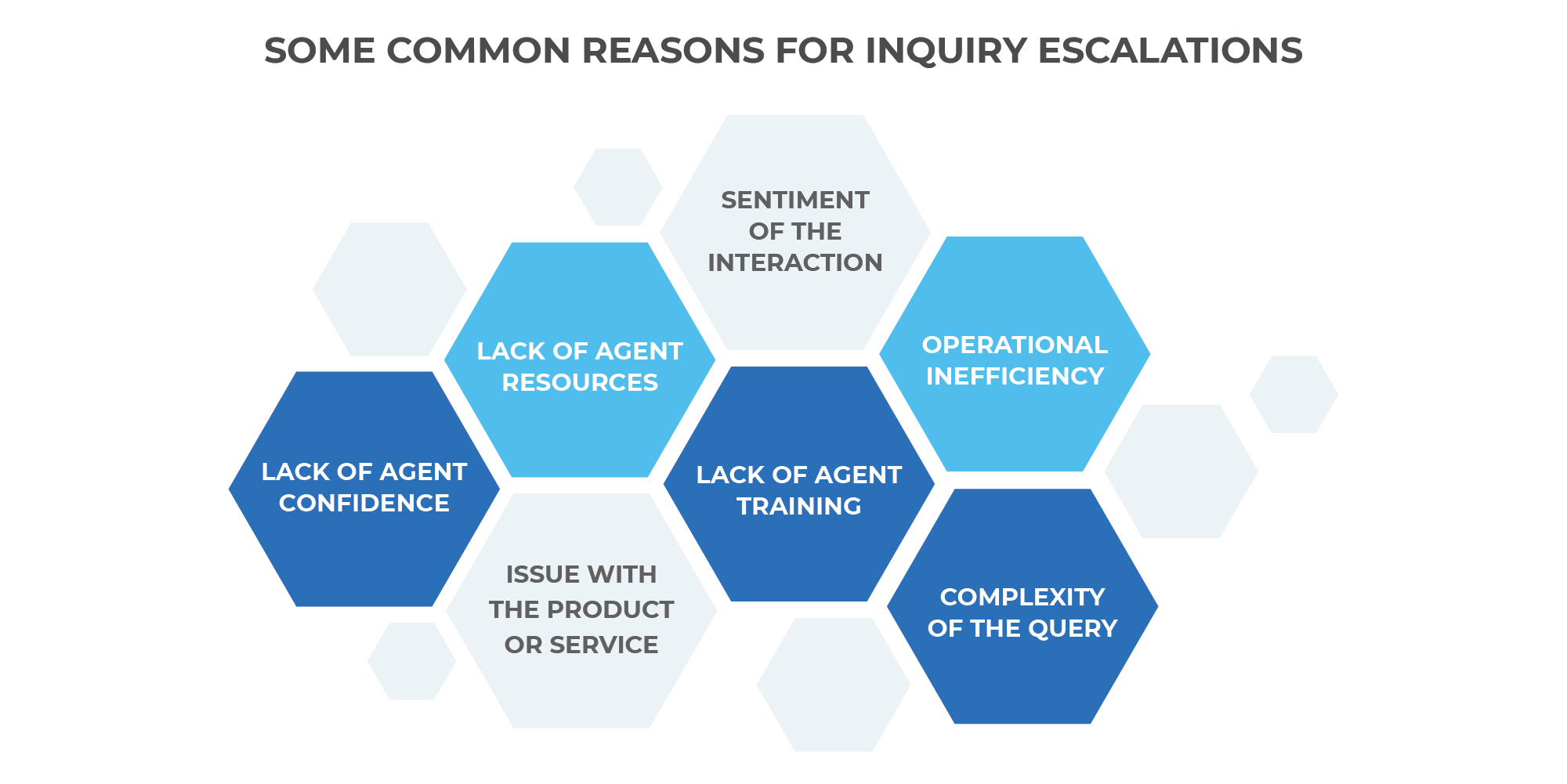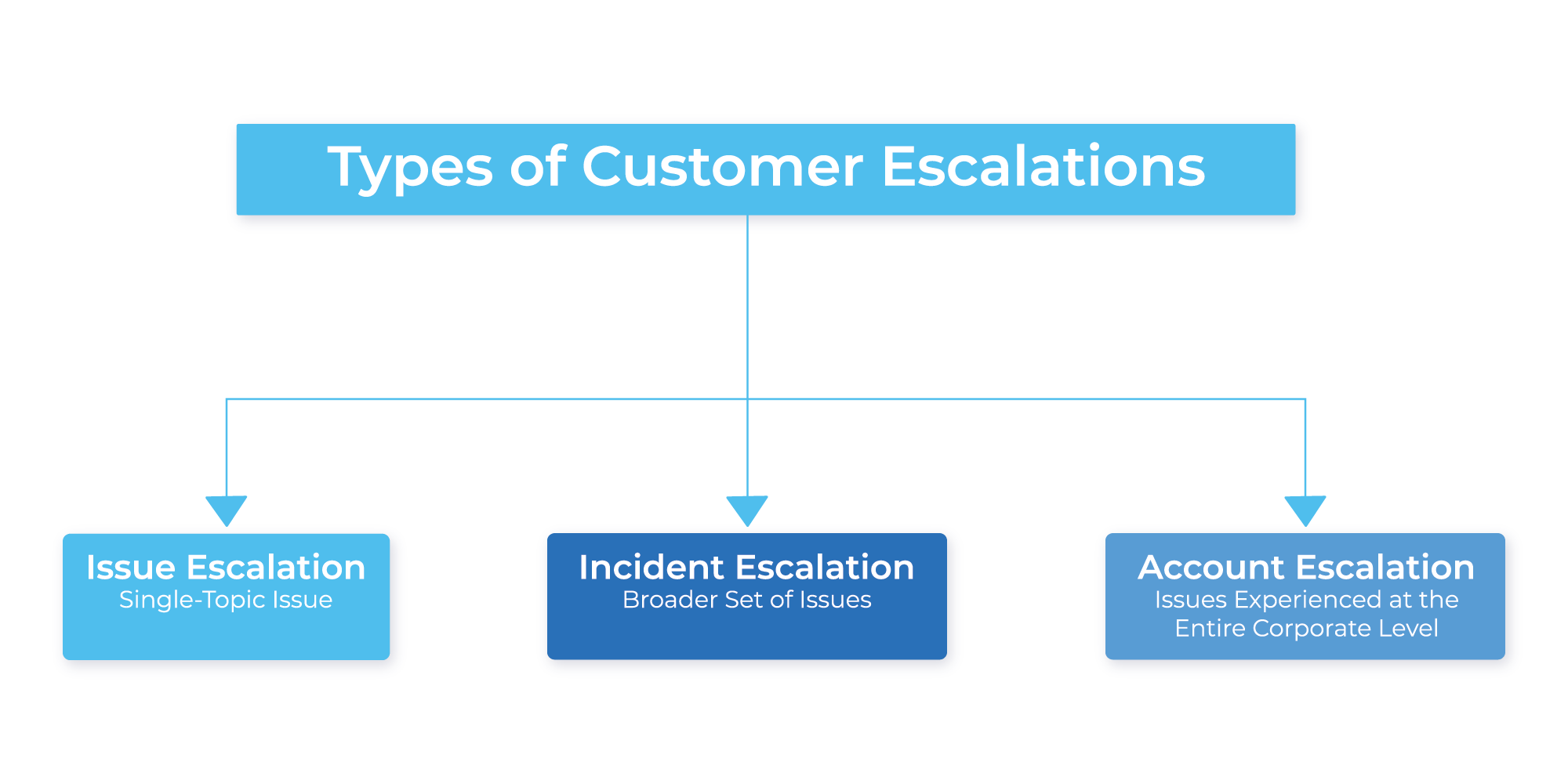
“Connect me to your manager” is one of the most petrifying phrases for support representatives. However, conflict is inevitable in business because no matter how airtight your customer service is, you cannot please everyone all the time. Occasionally, customers will be unhappy, irate, and demand to speak to the higher authorities. And if such requests are mismanaged or ignored, it can negatively impact customer experience, loyalty, and the overall brand image. This is where escalation management kicks in.
What is Escalation Management in Customer Service?
Escalation management is the process by which a customer’s complaint or issue is presented to a specialist, more experienced, or senior company representative — usually an L2 agent, supervisor, or manager. In an ideal world, every call center aims for a zero percent escalation rate. However, we are apprised of the fact that the lives of support reps and managers are not this simple.

The industry benchmark for supervisor escalation is 10 percent or less.
What are the Various Types of Escalation Paths?
Before we deep dive into the various types of escalation paths, let’s touch upon the various types of customer escalations. The image below will come in handy:

Coming back to the escalation paths, there are typically two paths as discussed below:
- Hierarchical Escalation: When an issue is moved up a chain of command based on the customer experience and seniority of an employee within an organization, it is known as hierarchical escalation. For example, a customer issue isn’t resolved within the stipulated time frame in your Service Level Agreement (SLA), the issue should then be escalated to a senior for a timelier response.
- Functional Escalation: When an issue is passed to a team or a person best equipped to resolve it based on their systems knowledge or skills, not their seniority, it is known as functional escalation. Such escalations happen immediately. For example, the initial agent to respond a call is a junior developer from a team handling the back end of product A whereas the core problem appears to be coming from integration with product B, the call would be escalated to another junior developer on the product B team.
How Do Supervisor Escalations Affect Contact Centers?
More than often a supervisor ends up with the same resolution for the customer query that the first agent would have provided. Therefore, managing and reducing escalations is the key to contact center efficiency and when ignored, it can have a drastic impact on your bottom line.
1. Sidetrack Supervisors from Strategic Tasks
Whenever supervisors or managers are involved in resolving customer issues due to escalation, they are sidetracked from strategic tasks such as agent coaching and training, process improvement, and call analysis. Therefore, less time for designing targeted training programs, planning high‑value engagements, and identifying organization‑wide challenges and inefficiencies is left.
2. Impact Overall Customer Experience
Irrespective of whether an escalation is under an agent’s control or not, supervisor escalations negatively impact the overall customer experience and CSAT. After all, in the information age where everything is available at our disposal, who’d like to wait on hold for a long time? Banking on your customers to abide by the ancient proverb — patience is a virtue — isn’t plausible.
3. Damage the Brand Image
Brands cannot afford to risk the CX and CSAT, especially in an era where customers have an instant outlet on social media. With the ease and accessibility nowadays, venting frustration on social media platforms is no rocket science. Therefore, support managers must be well‑trained to de‑escalate situations with proper escalation management before negative influences start making rounds on social media.
Quick Tip: Aim for better First Call Resolution (FCR) KPI to mitigate supervisor escalation rates.
How Do AI and Cognitive Tools Transform Escalation Management?
Artificial intelligence and automation free up support reps from mundane tasks so they focus more on complex and high‑value engaging tasks. Let’s see how.
1. Automate Inquiry Routing
One of the prime reasons for escalation is that the inquiry isn’t directed to the right agent right off the bat. Hence, all the call transfers take place, leaving behind customers unhappy and frustrated.
AI‑powered solutions learn words and phrases commonly used in inquiries; then foretell the nature, tone, and other details of the inquiry to recognize customer intent. Once the context of the query is in place, cognitive technology routes it to the right agent in much less time than humans could, significantly boosting FCR and cutting down escalations.
2. Maintain a Dynamic Internal KB
Support reps are drowning in data while starving for information. Despite the sea of data, they struggle to find the right information at the right time. Therefore, the need of the hour is a dynamic internal knowledge base that will empower agents in call centers to self‑serve efficiently.
Cognitive technology provides support reps with relevant, enterprise‑wide information as and when needed, regardless of where it resides and which support platform they use. With unified access to the information, support agents can easily find what they are looking for without toggling between different consoles and/or applications.
3. Build Data‑Driven Escalation Training Programs
Out of the various ways available to reduce escalation rates, designing impactful training programs is the most‑trusted one. As aforementioned, many common reasons for escalations arise from agents being less trained — lack of agent confidence, lack of agent skills, etc. Moreover, selecting the customized areas for training each individual is challenging.
Cognitive solutions generate realtime insights into frequently escalated cases. By leveraging this data, support managers can design impactful training programs as per the needs of individual agents. With data‑driven and personalized training programs, agents would be able to empathize more and critically listen to their customers, leading to better customer handling.
4. Ensure Realtime Support and Agent Augmentation
The churn rate at call centers is almost double of any other industry. By generating real‑time insights into top cases, articles, customer journey, customer case sentiment, etc., cognitive technology helps to cut down the mundane tasks and frees up agents for better and high‑value engaging activities.
Although the churn rate can be reduced, it isn’t inevitable. So, onboarding new agents also becomes a cakewalk with the cognitive tools as they learn from the existing case patterns and suggest case‑resolving responses in a jiffy that can be quickly sent to the customer, driving up First Call Resolution.
5. Develop Proactive Support Workflows
Proactive customer service is the future of call centers. Resolving customer issues before they happen doesn’t just make customers happy but it also highly increases the levels of customer loyalty. Automation can deliver a certain degree of responsiveness that isn’t humanly possible; and this is where cognitive technology comes into play.
By analyzing website and application data, cognitive technology identifies “distress indicators” that help to gauge where customers are experiencing issues. This enables agents to provide proactive support by developing an FAQ page accordingly. Moreover, such a preemptive approach could significantly lower customer abandonment rates in the purchasing cycle, while simultaneously reducing customer complaints and improving CSAT score.
Looking for Ways to Upskill Your Agents for Better Query Handling?
It’s no secret that a good CX is more influential on the customer’s purchase decision than advertising. And since call centers are often customers’ first — and sometimes their only — human interaction with a company, you need a well‑trained team of frontline agents to leave a positive lasting impression. Here’s an eBook Supercharge Agent Productivity and Transform Customer Support Operations with AI that’ll come in handy to upskill your agents for better query handling. Download it for free now!













